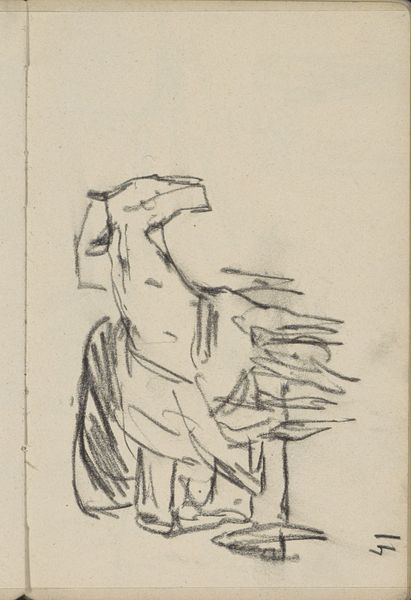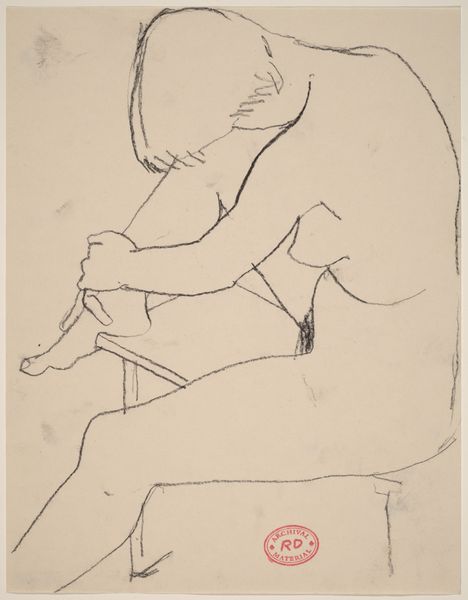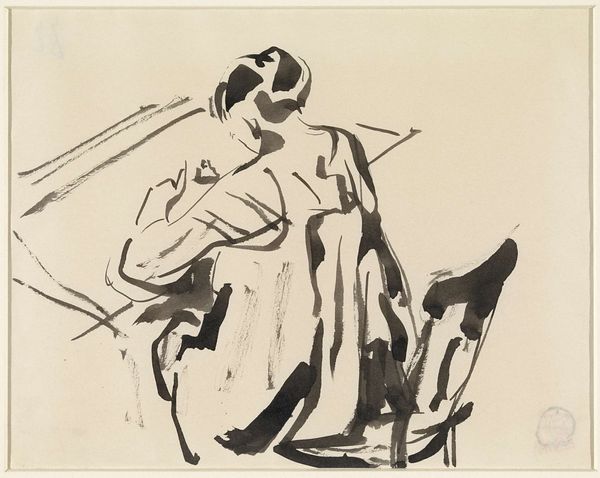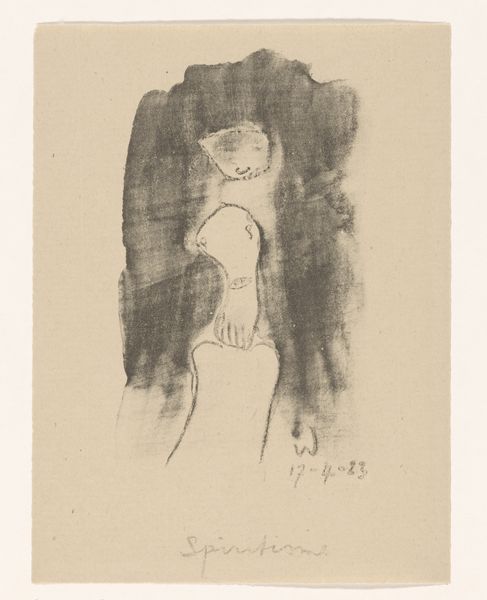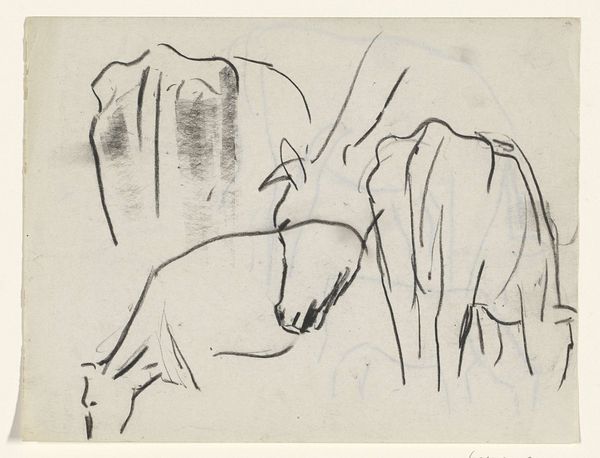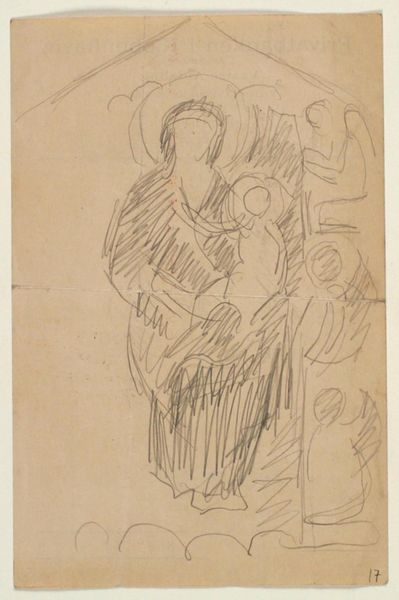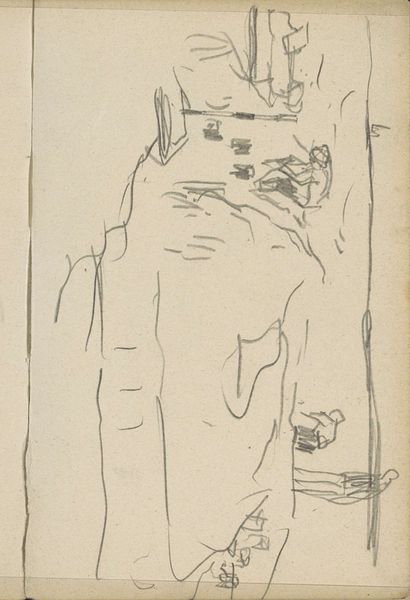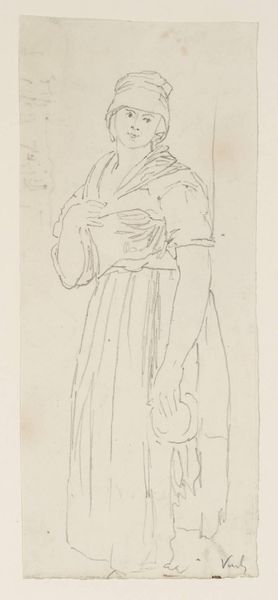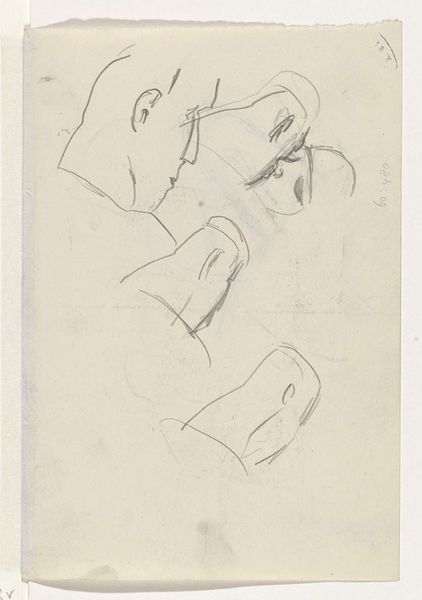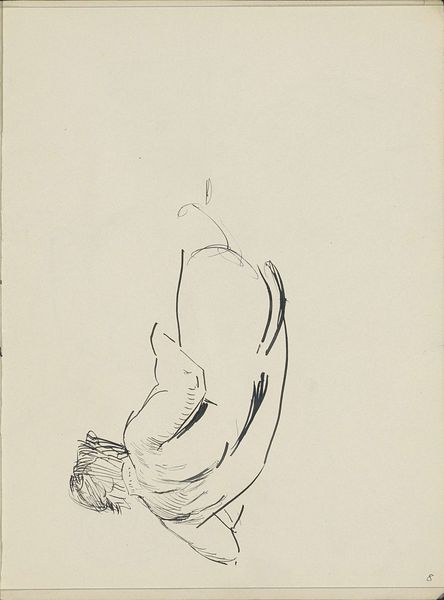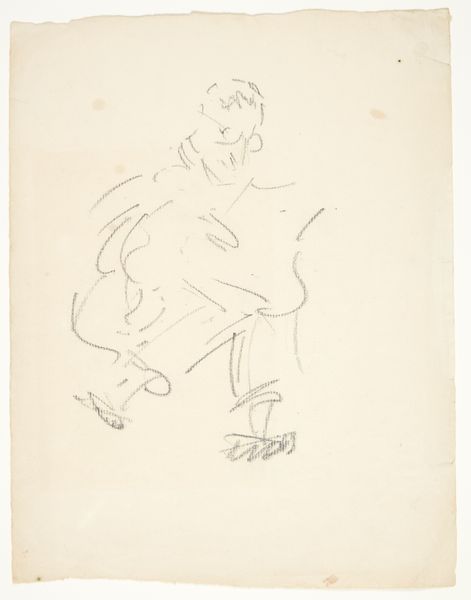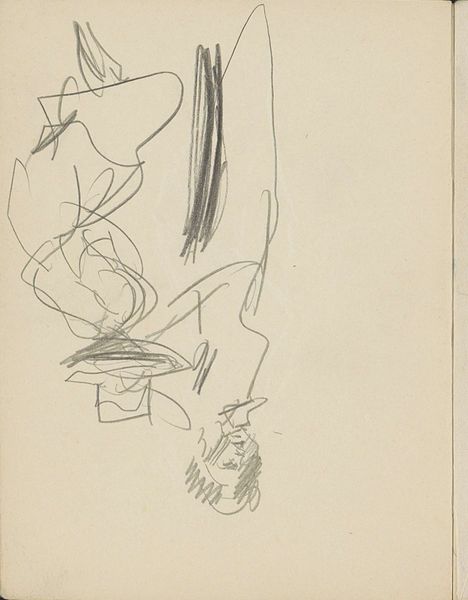
drawing, ink
#
portrait
#
drawing
#
asian-art
#
ukiyo-e
#
figuration
#
ink
#
line
Dimensions: height 134 mm, width 125 mm
Copyright: Rijks Museum: Open Domain
Editor: This is Totoya Hokkei's "Zittende man die zich met een doek op het hoofd wrijft", from sometime between 1791 and 1850. It's an ink drawing – such a simple medium, but so expressive. I am immediately struck by the vulnerability and intimacy of this scene. What's your read on it? Curator: Oh, intimacy, you say? Absolutely! It's like catching a fleeting moment, isn't it? The beauty of ukiyo-e, especially drawings like this, lies in their capacity to distill profound human experience into seemingly simple lines. Look at the way the ink flows, almost carelessly, yet defining the slump of his shoulders, the curve of his head. It's a study in exhaustion, perhaps? Or even just a moment of quiet contemplation. The rough headscarf is rather telling…do you get a sense of how this might have functioned as a genre image? Editor: Perhaps like a quick snapshot of daily life for the common person? I am struck by how much emotion the artist conveys with so few strokes. It feels unfinished, yet completely whole. Curator: Exactly! And there’s a wit to that incompleteness too, wouldn’t you say? Hokkei’s almost inviting us to fill in the blanks, to project our own stories onto this figure. What's he thinking? What's he feeling? The possibilities bloom from that intentional space. Like the jazz of Edo-period art. Editor: That’s beautifully put, the jazz of Edo art! I see it now; that incompleteness creates space for interpretation and connection. Thanks. Curator: Anytime. Remember that art, like jazz, lives in those spaces between the notes, the lines, the "finished" and "unfinished." That's where the real conversation begins.
Comments
No comments
Be the first to comment and join the conversation on the ultimate creative platform.
